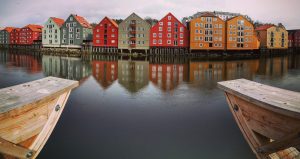The Summit of the Future, planned for 2024, looks set to be a key moment not just in the evolution of the United Nations’ work on its 2030 Agenda for Sustainable Development, but also in what comes next.
It will bring together many of the key workstreams launched in the context of Our Common Agenda, itself a response to the declaration of the UN’s Member States for the organisation’s 75th anniversary. A common thread throughout this the focus on how to enhance the capacity of the UN and wider multilateral system to deliver, correcting some of the weaknesses and blind spots of current structures and agendas.
The Culture2030Goal campaign is built around the understanding that for the sustainable development agenda to realise its goals, it needs to give a stronger and deeper role to culture. As underlined in our statement on the SDG Summit – due in September this year – we cannot afford to repeat the mistakes of 2015, leaving culture out of comprehensive policy agendas.
While our statement is focused on what is coming up later this year, the same logic applies – perhaps even more intensively – to the Summit of the Future. As a campaign, we cannot conceive of an effort to boost the UN’s ability to achieve its goals that doesn’t include an effort to include culture.
So how is it going so far? This blog explores the eight Policy Briefs which have already been published by the UN Secretary General as part of the process of preparing for the Summit of the Future. In each case, there’s a short description of the brief, and then an assessment of whether it contributes to a stronger consideration of culture in the UN’s action.
Beyond GDP (link)
This paper looks to advance work to complement Gross Domestic Product with other indicators that provide a fuller, and more forward-looking idea of where we stand, and where we are going. It proposes to launch work to identify a basket of 10-20 indicators, as well as to boost statistical capacity.
What does it say about culture?: unfortunately, nothing. Despite the well-acknowledged positive impact of culture on wellbeing as well as a wide variety of other goals, there is no mention of it in this paper, risking meaning that future policy-decisions will be made based on highly incomplete data.
Future Generations (link)
This paper aims to advance efforts to integrate considerations about the future more firmly into decision-making. It proposes doing this through more investment in foresight, an envoy or the future, and a Forum to pool expertise and ideas.
What does it say about culture?: the brief provides welcome recognition that the practice of integrating the interests of future generations is a long-standing practice in the cultural field, and that these have inspired many efforts to do so today. It also notes that work to preserve heritage also, by definition, is about safeguarding the possibility for future generations to access it. The brief could be improved by a more explicit reference to the need to reflect cultural considerations in future efforts in this space, in particular through any forum on foresight work.
Youth engagement (link)
This brief focuses on the desire to ensure a more consistent and meaningful level of engagement of young people in processes across the United Nations, both as a means of ensuring better decision-making, but also to build a sense of involvement and confidence.
What does it say about culture?: very little unfortunately. While the brief mentions the need to adapt institutional culture, there is little thought about what role the cultural field could play in developing new forms of engagement, or indeed in building wider cultures of engagement.
Global Digital Compact (link)
This brief refers to the drive to bring together the various different processes underway around the governance of the internet and the wider digital world, based on a number of shared principles. There is a strong focus on tackling divides, both at the level of individuals, and that of governments when it comes to the ability to regulate the digital world.
What does it say about culture?: there is a welcome focus on the need to connect cultural institutions to the internet and enable them to engage fully online. More broadly, the brief also recognises the importance of cultures and behaviours in a digital world that will need to evolve. Nonetheless, the cultural sector remains viewed simply as a provider of content.
Information Integrity (link)
This policy brief builds on parallel concerns about misinformation, disinformation and hate speech spread by private and governmental actors. Complementing work going on in parallel at UNESCO, it suggests a code of practice on information for governments and private actors, aimed both at tackling lies and building skills and resilience
What does it say about culture?: once again, culture tends to be seen in a relatively passive light, with it noted that digital platforms have transformed cultural interactions. There certainly is reflection on the role of behaviours and attitudes among internet users, but the response is mainly to regulate and provide training, rather than to mobilise cultural actors to build possibilities to deepen understanding.
Outer Space (link)
With major increases in numbers of satellites launched, more private sector engagement and new ambitions to visit deep space, this policy brief sets out a way of ensuring that there are the right governance mechanisms in place.
What does it say about culture?: Again, very little, although it does underline the potential for ambitious programmes to trigger the imagination and get other people thinking about the future. There is also a reference to the chance, some of the references to the need to manage shared resources effectively could build on lessons about traditional cultural approaches to this.
Financial Architecture (link)
At the heart of this policy brief is the sense that responses to financial crises are all too often inadequate, especially for poorer countries, while the resources available to support development are too scarce. It calls for reforms within financial institutions, better coordination, and a big increase in development spending.
What does it say about culture?: there are no references to culture in here, although it may be possible to interpret calls to give a greater weight to achieving the SDGs and wider sustainability in funding by the IMG and development banks as potentially, in future, allowing for greater investment in culture.
Emergency Platform (link)
This policy brief looks to learn the lessons from the most recent crises – in particular the pandemic and the cost of living crisis – and proposes a set of protocols that could be activated the next time the world faces a complex crisis. Through this, it should be possible to ensure stronger coordination, and more of a focus on the needs of the most vulnerable.
What does it say about culture?: there is no reference to culture in the paper, despite the key role it can play both in ensuring resilience upstream of crises and enabling recovery subsequently. Of course, the brief is focused on governance, but this too needs to be based on better information and insights (something that culture can offer), as well as the mobilisation of relevant stakeholders, which should of course include the culture sector.
Transforming Education (link)
This brief follows on from the 2022 Transforming Education Summit, and calls both for a re-emphasis on the importance of education and lifelong learning as a global public good, and efforts to address the parallel crises of equity (everyone should be able to benefit from education), relevance (people need to learn how to cope with a changing world), and the financing of education.
What does it say about culture?: references are again limited, although there is recognition both of the role of education in addressing more harmful cultural beliefs and practices, and in the value of creative education. The paper also notes the value of ensuring that education adapts to the needs of communities. However, in its thin references to cultural education, and none at all to the need to work with and through culture to ensure effectiveness, there is much that could be improved.
A New Agenda for Peace (link)
This brief addresses the concern that just as polarisation and conflict appear to be on the rise again, the infrastructures in place for addressing them are weakened. The brief calls for a reaffirmation of the values of trust, solidarity and universality, and promotes a more holistic, preventative approach to peace-building, as well as referring to the value of potential UN reform.
What does it say about culture?: sadly, very little at all. There is recognition that conflict within societies can easily be reflected in conflicts between countries, as well as the harmful effects of a lack of understanding or sense of togetherness between peoples. It talks also about ‘cultures’ of peace, but again, does not go into enough depth on questions of peace-building and prevention and how cultural initiatives can help in this respect. A particular concern is that there is no reference to the role of protecting heritage and ensuring its survival as a basis for recovery.
UN 2.0 (link)
This brief looks at the changes the Secretary General believes are necessary in the United Nations itself in order to be a more impactful and sustainable organisation. It sets out a ‘quintet of change’ – actions around data, innovation, digital, foresight and behavioural science, within the context of wider efforts to promote forward thinking and bring about cultural change within the organisation. With a combination of efforts by the UN system and Member States, this should leave the UN better able to achieve its goals, with a plan proposed for 2024-26.
What does it say about culture: a lot in fact – there are more references to culture in this brief than in all of the others put together. The emphasis, however, is on culture understood broadly as a set of attitudes and beliefs which condition the way we work. This is applied both to the UN as a whole (calling for culture change in the organisation) and in policy implementation (where the value of investing in behavioural science is highlighted). However, there is relatively little exploration of how this change can happen, and no reference to culture as the set of cultural institutions and actors, and how their insights and work can help.
Across the briefs, there is certainly space for culture to play a role, and in particular in the final one. However, this approach remains piecemeal, and leaves plenty of gaps, and so is likely to offer an insufficiently strong drive to realise the potential of culture. Based on the MONDIACULT Declaration of 2022, there is both the scope and substance for a policy brief focused on culture, starting the process of correcting the mistakes of 2015.


